How Long Can You Live In Log Cabin?
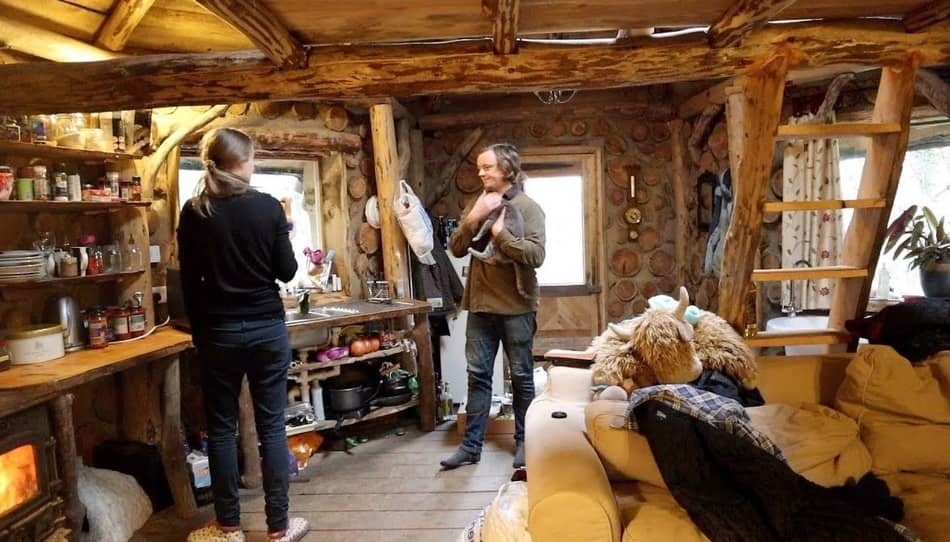
A log cabin is a small home that usually comes with a less finished sophisticated structure. These cabins have an ancient history in Europe and America. They are often associated with the first-generation home building by settlers. Nowadays, log cabins are used as vacation spots or cozy guesthouses in our backyard.
If you wonder how long it’s possible to live in a log cabin, keep on reading. This is an often-asked question because people want to know if spending their money on it is worth it. So, let’s start!
Table of Contents
How Long Can You Live In Log Cabin?
So How Long Can You Live In Log Cabin? Usually, log cabins can last up to sixty years and more. If you properly maintain the timber on your log cabin, there is no reason for a cabin to last for a lifetime. That way you can live in a log cabin your whole life without having to do major remodeling.
How Long Can Log Cabins Last?
There’s no reason why your log cabin’s wood (timber) shouldn’t last a lifetime if you take proper care of it. For example, ships have been built from that same wood, and they lasted for ages. Doors on our homes are also built out of wood, and there are still some 100-year-old doors looking and functioning great to this day.
The most crucial thing to remember is to keep your log cabin timber dry. That is why cabins are constructed on top of smaller foundations that keep the timber away from dampness. Even if the ground is concrete or tarmac, the cabin must overhang over its foundation to not collect water beneath the wood.
What might also interest you regarding this topic is Are Log Homes Warm In Winter?
Things To Consider Before You Decide To Live In A Log Cabin
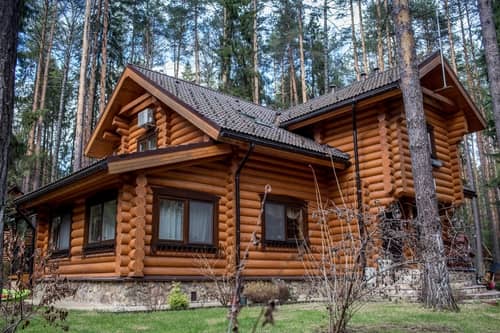
Particular log cabins (especially tiny ones) are intended to be used as holiday or summer homes. They’re usually designed and used for shorter periods of time, and their layout also reflects this. If you wish to live in a log cabin all year, it is important to do the following things.
Log Cabin Insulation
Permanently living in a log cabin is possible if the proper amount of insulation is constructed and if double glazing is installed. If you formally apply for insulation planning, you will be required to improve the insulation to at least 6 inches according to the new NZEB (Near Zero Energy Buildings) rules. The exact thickness of insulation is defined once the type of insulation is known.
Draught-proofing A Log Cabin
Because even light wind can create a problem, there is also the matter of draught-proofing or air-stripping your log home. Log cabins are much easier to build compared to brick houses. Tricky design elements with numerous unnecessary edges, such as bay windows or dormer windows, are rare in log houses, making the process of air-stripping difficult.
If your log cabin does have this problem, the process will be more complex and maybe even ineffective. It’s best to then consult with a professional. Because these cases are exceptions, you shouldn’t have issues while air-stripping and draught-proofing.
Log Cabin Planning Permission
Before deciding to live in your log cabin permanently, you’ll probably need to get planning permission. Planning permission is an approval signed by an engineer that guarantees that the process will be carried out well and by the law. This might sound complicated, but don’t be deterred. It’s not that hard to get it if you follow the rules given out by authorities. For this, it is best to contact a professional and let him handle all the required paperwork.
Can I Live In a Log Cabin Permanently?
Let’s start with the legal aspect, which boils down to obtaining planning permission. Planning approval is the easiest to obtain if you wish to build a wood cabin in your garden, and you might not even need it if the structure doesn’t take up more than half of your garden’s external space and doesn’t exceed the specific height and roofing restrictions.
If you wish to build a log cabin somewhere else, things might be a little more complicated. In that case, you will need to own the property on which the log cabin would be built or installed. Consider where this piece of property is located, how prone to floods it is, and how close it is to environmental noise.
Here you can see a great YouTube video where some individual explains how it is to live in a tiny log cabin for 4 years.
After establishing that, you’ll have to request planning approval to construct your log cabin. If you’re building a log house which is a permanent structure on your property, you’ll need to file blueprints to the town planning office, follow their construction codes, and do a thorough assessment of the location. Even though there’s a lot to do when setting up your cabin, once you gain approval, there will be nothing keeping you from settling into your new log cabin home right away.
What You’d Need to Live in a Cabin Permanently
When we reduce human life to its bare essentials, we discover that we don’t require much at all. That’s why people don’t need much to live in a cabin permanently. Here are some basics we think most people would like to have:
1. Electricity
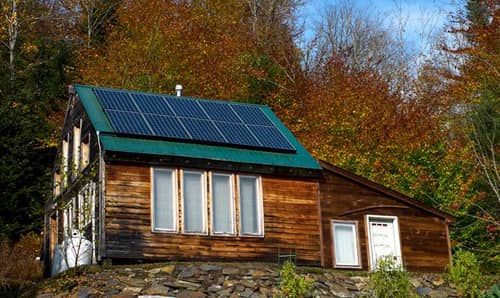
You’d assume that installing power in your log cabin (home) would be the most challenging task. In reality, when it comes to finding adequate energy sources, there are a lot more possibilities than you would assume.
Solar panels, for instance, can be installed on top of the roof of a log house and transform solar energy into electricity for your home. The quantity of energy these solar panels can produce may not be sufficient to power a family’s house, but it could be enough for a smaller house like a log cabin.
In any case, if you want electricity in your cabin, you will need to add plug sockets. This is not a task for someone who isn’t familiar with electrical systems because it can be dangerous. That’s why a professional should be hired for this job.
During the winter months, you might want to consider investing in an electric fireplace or radiator as a simple and low-cost heating option. It will not only keep you, your family, and your friends warm, but it will also serve as a trendy and attractive focal point for your cabin.
Related Article: Is It Safe to Use a Propane Stove In A Cabin?
2. Internet

Being in the 21st century, we’ll presume you would like to have a stable Wi-Fi connection in your home. If your private log cabin sits in your backyard, the Wi-Fi router in your main house could be strong enough to support both houses. If not, another router can be installed as an extension to the original one. There are also other ways, but this is for sure the best and easiest option.
If you prefer to have your log cabin as a peaceful getaway place in the middle of the forest, far away from home, having an internet connection may appear to be an impossible challenge. However, there are many more options than you would believe!
Some options are:
- 5G Internet Provider. You can install a router that utilizes the same reception as your cellphone. In most parts of the U.S., these routers deliver a fast and consistent signal.
- Satellite Router. You can get a router that links itself directly to the satellites. This router is the ideal option if the cabin is far away from larger cities and there is barely any cell connection in the area.
3. Fresh Water
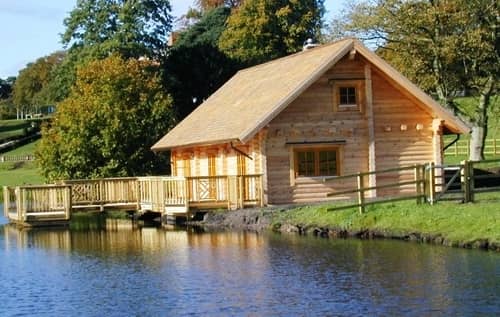
Having clean water shouldn’t even have to be pointed out as necessary, especially if you plan on staying in the cabin for more than one day. Other than water keeping you clean, it is also healthy to have a hot shower after a long walk in the woods to warm up.
Getting any water, even just cold water, to your lodge will necessitate the installation of underground pipes, which will require excavating. Keep in mind that only a professional plumber can properly install and link the pipes to the boiler, which will supply warm water for showers and the kitchen.
Getting cold water is drastically easier. If you want to take the easier rode and not install a boiler, you can always heat it up in a kettle or burner when you urgently need it. In that case, plan shorter, one or two-day trips to the cabin. However, if you intend to stay for an extended period of time in your log cabin, you’ll need a steady supply of clean and warm water from the boiler.
However, if you have a primary residence to return to (in the case of cabins in the backyard), this shouldn’t be an issue.
4. Lighting
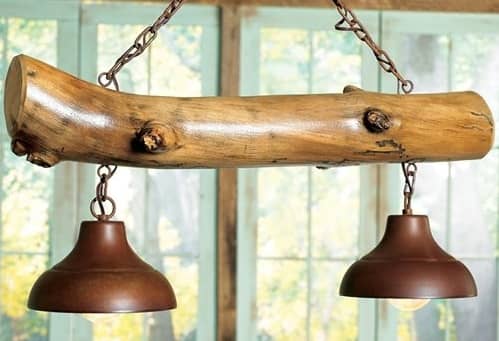
When it comes to lighting for your cabin, you have a few choices. Determining the ideal option for your cabin depends on how much light you require, how much money you want to spend, and what type of light you want.
Most popular lighting choices:
- Halogen Lamps. Halogen lamps are excellent for overhead lighting, track lighting, and adjustable spotlights.
- Desk and floor lamps. These lamps are great low-cost illumination solutions that are a smart investment if you work from home.
- LED lighting. LED lights are adaptable and cost-effective to operate. They can be in the form of LED strips that create a cozy atmosphere or more intense, spotlights.
- Candles and lanterns. They are the cheapest option that’s easy to install and can help with creating a romantic mood in the cabin.
5. Good Insulation
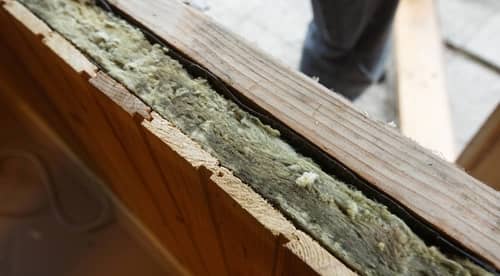
If you have been reading until this point, you probably caught on to the fact that it’s possible to live in a log cabin permanently. However, throughout the winter, the bitterly low temperatures might be a significant issue. The only way to avoid freezing all the time is by installing good-quality insulation in the walls and through the roof.
Although wood is an excellent insulator, it is not strong enough to insulate the cold out completely. Properly insulating your log home will ensure that inside heat is retained when the temperatures outside drop. Furthermore, a well-insulated wood cabin will require less heating, resulting in lower electricity bills.
It’s best to use fiberglass wool and/or thermal insulation foil to insulate a cabin. Besides lowering power usage, good insulation reduces negative environmental effects such as released pollutants, high carbon footprints, and poor energy efficiency.
6. Food
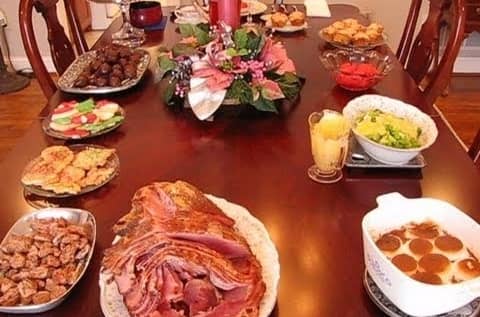
Storing food doesn’t have to include having a fridge. You’d be shocked at how much food you can store without using one. For years, many dry foods such as rice, pasta, beans, and oats can sit at room temperature. Canned products and stews, such as tomatoes, beans, and tuna, are also wonderful choices because they are nutrient-dense but still last a long time.
Comfort foods like chocolate, chips, and candy are also very durable alongside coffee and have a favorable influence on mood and mental health.
Additionally, people have established a variety of food preservation technologies over time. Supermarkets now use those to keep our food fresh for a longer time. If you prefer having fresh meat, fruits and vegetables, getting a fridge isn’t a bad idea. All you need is a functioning power outlet and that’s it.
When it comes to cooking, you can install a whole set of kitchen appliances like you would in your main home, or you can choose only a few. If you do not want to go all out, a dual microwave and air fryer combo would be a great option.
For those who want to know more, feel free to read Can A Log Cabin Be Moved? Expert Explain.
Final Thoughts
If you decide to live in a log cabin, now you know that it is possible. People lived in such houses a hundred years ago, which proves that it is possible. It is only necessary to equip the log cabin well and bring all the necessary means that we have listed in this article. Therefore, I hope this article has helped you, and if you have additional questions feel free to contact us.


Your article helped me a lot, is there any more related content? Thanks! https://accounts.binance.com/en/register?ref=FIHEGIZ8
Can you be more specific about the content of your article? After reading it, I still have some doubts. Hope you can help me. https://www.binance.com/en/register?ref=V2H9AFPY